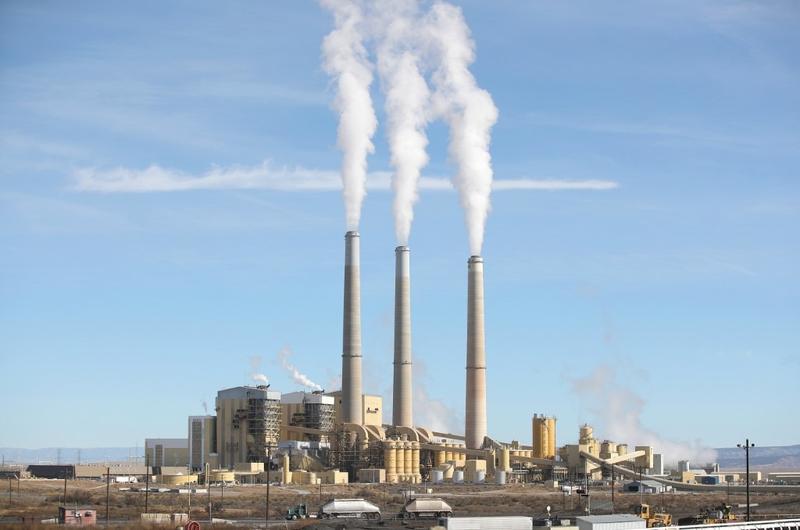 PacifiCorp's Hunter coal-fired power pant releases steam as it burns coal outside of Castle Dale, Utah on Nov 14, 2019.
(GEORGE FREY / AFP)
PacifiCorp's Hunter coal-fired power pant releases steam as it burns coal outside of Castle Dale, Utah on Nov 14, 2019.
(GEORGE FREY / AFP)
WASHINGTON - The United States formally exited the Paris Agreement on Wednesday, fulfilling a years-long promise by President Donald Trump to withdraw the world’s second-largest greenhouse gas emitter from the global pact to fight climate change.
READ MORE: US kicks off withdrawal from Paris Agreement
But the outcome of the tight US election contest will determine for how long. Trump’s Democratic rival, Joe Biden, has promised to rejoin the agreement if elected.
The departure makes the United States the only country of 197 signatories to have withdrawn from the agreement, hashed out in 2015
“The US withdrawal will leave a gap in our regime, and the global efforts to achieve the goals and ambitions of the Paris Agreement,” said Patricia Espinosa, executive secretary of the UN Framework Convention on Climate Change (UNFCCC).
The United States still remains a party to the UNFCCC. Espinosa said the body will be “ready to assist the US in any effort in order to rejoin the Paris Agreement.”
Trump first announced his intention to withdraw the United States from the pact in June 2017, arguing it would undermine the US economy. But he was unable to formally do so until now because of the requirements of the deal.
The departure makes the United States the only country of 197 signatories to have withdrawn from the agreement, hashed out in 2015. Obama’s White House had pledged to cut US emissions 26-28 percent by 2025 from 2005 levels under the deal.
Biden is broadly expected to ramp up those goals if elected. He has promised to achieve net-zero emissions by 2050 under a sweeping US$2 trillion plan to transform the economy.
ALSO READ: Pacific leaders want US back in Paris climate pact
The Rhodium Group said that in 2020, the United States will be at around 21 percent below 2005 levels. It added that under a second Trump administration, it expects US emissions would increase by more than 30 percent through 2035 from 2019 levels.
Most scientists believe the world must cut emissions sharply and quickly in order to avoid the most catastrophic effects of global warming. China, Japan, South Korea, and the European Union have recently ramped up their carbon cutting targets.


